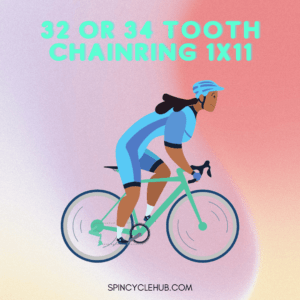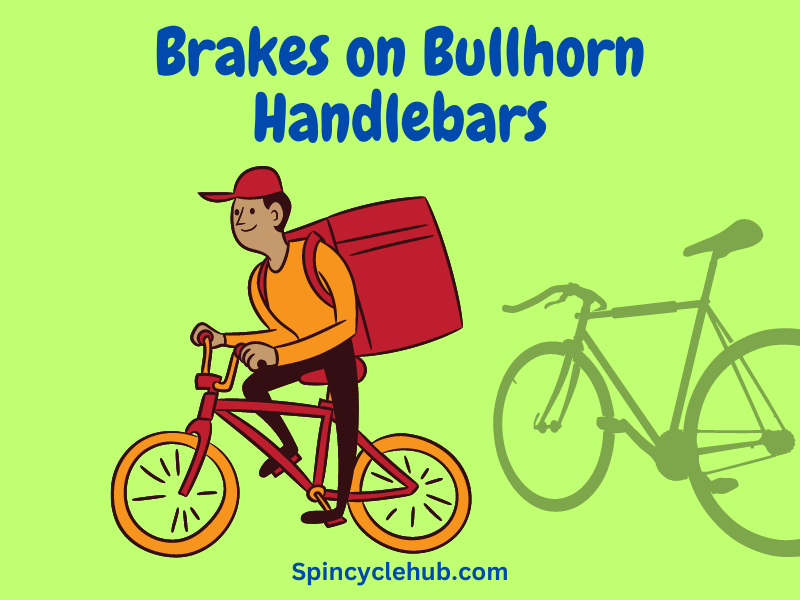Introduction
When it comes to cycling, finding the right gear ratio can make all the difference in your riding experience. One key component that affects your gear ratio is the chainring, specifically the number of teeth it has. In this article, we’ll dive into the debate between using a 32 or 34 tooth chainring in a 1×11 drivetrain system and help you understand which option might be best for your riding style and terrain.
Understanding Gear Ratios
Before we delve into the specifics of chainring sizes, let’s quickly understand gear ratios and their impact on cycling. Gear ratios determine how much power is transferred from your legs to the wheels. A higher gear ratio provides more speed and efficiency on flat terrain, while a lower gear ratio offers better climbing capability and torque for tackling steep hills.

The number of teeth on your chainring plays a crucial role in determining the gear ratio. Generally, a smaller chainring with fewer teeth results in a lower gear ratio, while a larger chainring with more teeth provides a higher gear ratio.
The 1×11 Drivetrain System
The 1×11 drivetrain system has gained popularity among cyclists for its simplicity and versatility. With a single chainring at the front and an 11-speed cassette at the rear, this setup eliminates the need for a front derailleur and simplifies shifting. It offers a wide gear range suitable for various terrains and riding styles.
Choosing the Right Chainring Size
Now, let’s discuss the two popular chainring sizes for a 1×11 drivetrain: the 32-tooth and the 34-tooth chainring.
Factors to Consider
When selecting the chainring size, there are several factors to consider. Firstly, think about the terrain and riding conditions you encounter most often. If you frequently tackle steep climbs, a smaller chainring like the 32-tooth might be advantageous. On the other hand, if you ride on mostly flat roads or enjoy faster-paced riding, a larger chainring like the 34-tooth could be more suitable.
Advantages of a 32-Tooth Chainring
A 32-tooth chainring offers several advantages. It excels in climbing capability, allowing you to conquer steep hills with relative ease. The lower gear ratio provides more torque, making it ideal for technical and demanding terrains. Additionally, beginner or intermediate riders often find the 32-tooth chainring more forgiving and easier to handle.
Advantages of a 34-Tooth Chainring
Conversely, a 34-tooth chainring offers its own set of advantages. With a larger chainring, you can achieve higher top speeds and greater efficiency on flat terrain. The increased gear ratio allows for a smoother pedaling experience, particularly during high-speed rides. The 34-tooth chainring is often favored by experienced and competitive riders seeking maximum performance.
Terrain and Riding Style Considerations
To make an informed decision, it’s important to consider the type of terrain you typically ride on and your riding style.
If you frequently encounter steep climbs, such as mountainous or hilly regions, the 32-tooth chainring shines. It provides the low gearing necessary for sustained uphill efforts, allowing you to maintain a comfortable cadence and conquer challenging gradients.
For riders who encounter a mix of terrains, including rolling hills, a 32-tooth chainring still offers the versatility needed for both climbs and flats. It strikes a good balance between climbing capabilities and maintaining speed on less demanding terrain.
On the other hand, if you primarily ride on flat roads or enjoy sprinting and faster-paced riding, the 34-tooth chainring might be more suitable. Its higher gear ratio enables you to generate greater power and speed, propelling you forward with efficiency.
Personal Preferences and Fitness Level
In addition to terrain considerations, your personal preferences and fitness level also come into play when choosing a chainring size. Every rider has unique preferences when it comes to cadence and pedaling style. Some riders prefer a higher cadence with faster revolutions per minute (RPM), while others thrive with a slower, more forceful pedal stroke.
Your fitness level and strength are also crucial factors. If you have excellent strength and power, you may find a larger chainring like the 34-tooth more appropriate for your capabilities. However, if you’re still building your strength or prefer a more relaxed riding style, the 32-tooth chainring offers a more forgiving and manageable option.
Anecdotes and Personal Experiences
To shed further light on the 32-tooth vs. 34-tooth debate, let’s explore some anecdotes and personal experiences from cyclists who have used both chainring sizes.
Riders who prefer a 32-tooth chainring often highlight its climbing prowess. They share stories of conquering steep hills and technical trails with confidence, emphasizing the advantages of the lower gear ratio. Beginners and intermediate riders appreciate the forgiveness and control the 32-tooth chainring provides during their learning phase.
Conversely, riders who favor a 34-tooth chainring emphasize the speed and efficiency it offers on flatter terrain. They share experiences of achieving higher top speeds and smoother pedaling during sprints and endurance rides. Competitive riders often find the 34-tooth chainring maximizes their performance potential.
Conclusion
In the end, the choice between a 32-tooth or 34-tooth chainring for your 1×11 drivetrain comes down to personal preference, terrain, and riding style. Consider the factors discussed in this article, experiment with different chainring sizes, and find the option that suits you best. Remember, there is no definitive right or wrong choice, as long as it enhances your riding experience and helps you achieve your cycling goals.

FAQs
Q: Is a 32-tooth chainring suitable for steep climbs?
A: Yes, a 32-tooth chainring is well-suited for steep climbs, providing a lower gear ratio and better torque for sustained uphill efforts.
Q: Can I switch between a 32-tooth and 34-tooth chainring?
A: In most cases, yes. Depending on your drivetrain, you may need to adjust the chain length and potentially the rear derailleur to accommodate the different chainring size.
Q: How does chainring size affect cadence and pedaling efficiency?
A: Chainring size influences the gear ratio, which in turn affects cadence. Smaller chainrings offer lower gear ratios, promoting a higher cadence, while larger chainrings favor a lower cadence with more forceful pedaling.
Q: Does a smaller chainring size provide better acceleration?
A: Smaller chainrings offer lower gear ratios, which can contribute to quicker acceleration from a standstill or during low-speed maneuvers.
Q: What other factors should I consider when choosing a chainring size?
A: Apart from terrain and riding style, consider your personal fitness level, strength, and preferred cadence. Experimentation and listening to your body’s feedback will help you find the ideal chainring size that suits your needs.
- “Choosing the Right Chainring Size for Your Bike“ – This article dives deeper into the considerations and factors involved in choosing the right chainring size. It provides insights on gear ratios, terrain considerations, and personal preferences.
- “Understanding Gear Ratios in Cycling“ – This resource provides a comprehensive understanding of gear ratios and how they impact cycling performance. It covers the basics of gear ratios, the relationship between chainring teeth and gear ratio, and their effects on speed and power transfer.
Watch this one,
Video Credits – absoluteBLACK.cc
DOWNLOAD THIS ARTICLE :Click Here
You May Also Like
-
Ride Wrap vs. InvisiFrame: Battle of the Bike Protection Films
-
A Closer Look at the Ibis S35 Aluminum Wheels: Unveiling Their Performance
-
RockShox SID Bushing Play: Is Your Suspension Feeling Loose?



